Words vs. Images, in Aperture’s Winter Issue
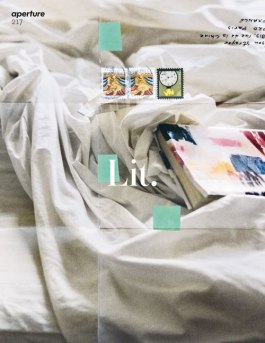 Aperture, the venerable photography magazine, has dedicated its winter issue to an investigation of the interplay between words and images. Are we becoming more visually literate? Is our image-rich culture putting pressure on the written word? What do images accomplish better than words, and vice versa? Obviously, these questions lie at the heart of what I’ve been doing here at The Literate Lens for almost three years, so I was pretty excited to get my hands on the issue.
Aperture, the venerable photography magazine, has dedicated its winter issue to an investigation of the interplay between words and images. Are we becoming more visually literate? Is our image-rich culture putting pressure on the written word? What do images accomplish better than words, and vice versa? Obviously, these questions lie at the heart of what I’ve been doing here at The Literate Lens for almost three years, so I was pretty excited to get my hands on the issue.
The question of whether images are supplanting words is not a new one. As the issue’s introduction points out, when Aperture was launched in 1952, critic and curator Nancy Newhall wrote (pretty damn presciently) that “perhaps the old literacy of words is dying and a new literacy of images being born. Perhaps the printed page will disappear and even our records [will] be kept in images and sounds.”
Clearly, though, there has been an additional change in the last few decades. Old models of both writing and photography have become less viable, ceding to technological innovations. But what does it all mean? Which models are still valid, and what new ones are being created? Should we be celebrating these changes or mourning our losses?
Of course, these are difficult questions, and at first, the issue’s content doesn’t seem to address them head-on. There’s a lot of looking back rather than forward, with articles examining the photographic output of William S. Burroughs, a rediscovered 1930 novel-in-photos by Germaine Krull, and the way Walker Evans brought literary influences to bear on his photographic practice (and was a lyrical writer in his own right).
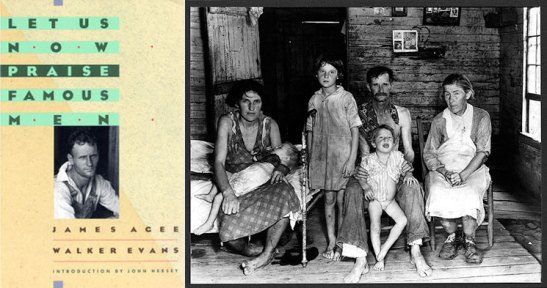
In 1941, Walker Evans took photographs for ‘Let Us Now Praise Famous Men,’ a collaboration with writer James Agee. Evans was a lyrical writer in his own right.
Rather than examining the differences between word and image, a lot of the articles go out of their way to emphasize similarities. In the article on Walker Evans, Evans is quoted calling photography “the most literary of the graphic arts” because it can have “qualities of eloquence, wit, grace, and economy; style, of course; structure and coherence; paradox, play and oxymoron.” Elsewhere, novelist Lynne Tillman posits that “fiction is another form of image-making,” and novelist Tom McCarthy suggests that “ultimately it’s all scriptural: things such as light or ink mark and are recorded on surfaces, and that’s an event of writing” (though he admits this is “a very writerly vision”).
In one fascinating article (again, looking at history), artist and writer Carmen Winant tells the story of New Directions, a publishing house that, in the 1930s, pioneered the use of artistic photographs on fiction and poetry book covers. Prior to this, book covers had been mostly text-based, but in order to boost sales, publisher James Laughlin began using black-and-white photographs on his covers. With their clean designs and creative techniques (double exposures, extreme close-ups, negative images, long exposures) the New Directions covers set a distinctive tone, communicating the Modernist sensibilities of writers like T.S. Eliot, Franz Kafka, and Henry Miller. “By using pictures to describe words, rather than the other way around, they jettisoned the artificial boundaries between the two,” Winant writes. Ever since then, book cover design “has become inexorably entangled with the experience of encountering, and traveling through, literature.”
Still, despite all these spirited arguments for word and image correspondence, there are differences. These are expressed in different—and eloquent—ways by some of the writers in the issue. Poet Ann Lauterbach talks about “the silence that every photograph compels us to acknowledge.” In an email conversation with writer Janet Malcolm, novelist and theorist Geoff Dyer writes of “the eternal question about photography…Is a photograph defined by what’s in it or by who took it? Well, a bit of both, obviously.” Fiction, on the other hand, doesn’t have to grapple with that question because it is removed from the lived moment. In that sense, it can sometimes be less complicated to consume and analyze.
Are images trumping the written word? In my view, they aren’t (though admittedly, as a writer I obviously have a vested interest in believing that). After all, blogs and tweets are proliferating just as fast as Pinterest and Instagram posts. And nor is everything about brevity. The last couple of years have seen a resurgence of the long novel, with notable examples by debut novelists Matthew Thomas, Garth Risk Hallberg and Emma Cline. And if newspapers and magazines are dying a slow death, long form journalism is still alive and well online.
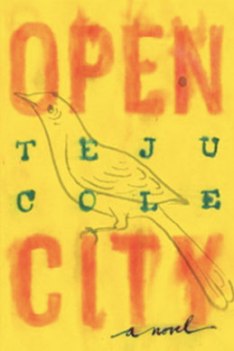 So what does the future hold? In Aperture, the writer who I think most gets to the heart of this matter is Teju Cole, both a novelist and a photographer (his 2012 novel Open City won the Pen/Hemingway award for first fiction). In a short but resonant piece, Cole suggests that although we’re living in a New World Order of Instagram, drones and optical recognition software, “we still have a hunger for poetry and lyricism, an intense hunger that is difficult to satisfy.” This urge of ours to transcend the mundane (or alternatively, celebrate it), is, Cole suggests, the very thing that makes us human. The poetic word and image “still matters,” he writes. “It is still as elusive as it ever was, and, just as ever, it is still worth chasing down.” In the end, I think it’s that urge that matters most, and not whether it’s expressed visually or verbally.
So what does the future hold? In Aperture, the writer who I think most gets to the heart of this matter is Teju Cole, both a novelist and a photographer (his 2012 novel Open City won the Pen/Hemingway award for first fiction). In a short but resonant piece, Cole suggests that although we’re living in a New World Order of Instagram, drones and optical recognition software, “we still have a hunger for poetry and lyricism, an intense hunger that is difficult to satisfy.” This urge of ours to transcend the mundane (or alternatively, celebrate it), is, Cole suggests, the very thing that makes us human. The poetic word and image “still matters,” he writes. “It is still as elusive as it ever was, and, just as ever, it is still worth chasing down.” In the end, I think it’s that urge that matters most, and not whether it’s expressed visually or verbally.
8 comments on “Words vs. Images, in Aperture’s Winter Issue”
Leave a Reply
Connecting to %s


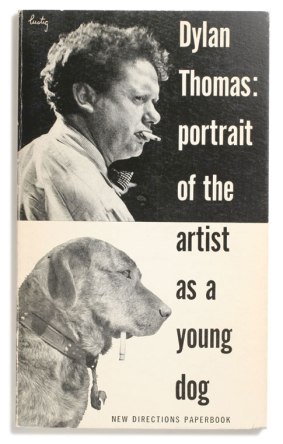
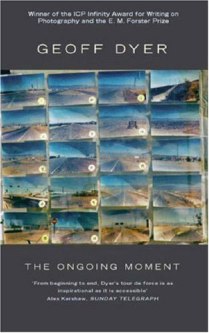

Bravissima!!!!! I like it very much! Paola
Excellent! I love the ending…
Reblogged this on kenziedayze970 and commented:
Im so glad I found this article. I started realizing the gift I had of capturing a million words per picture a few years back. The second my eye reaches a photo its like I can describe it soo many ways, My attention grasps and admires its beauty, then my brain drives to find a voice for this photo. It speaks to me, many photos do.. The world is a beautiful place to see and I want to share what I feel I see. A picture is worth a million words but just a photo couldn’t explain it’s justice. I love what I do and this is it. Ive always longed to get a blog and copy all my thousands of pages of writing somewhere public, maybe, and today I found I might as well. I ran into this site, which now has given me more sight to the world or words. Writers and the magnificent world beyond our imaginations…. Im thrilled
This blog is simply amazing. Thank you.
Thank YOU for leaving such a nice comment!
words and imagery are inextricably linked, in my humble opinion… as writer, photographer and musician, i find space to combine all 3… often moving images, by way of film.
sometimes, however, it is hard to convey the boundless energies of the imagination. if you and i were to read Neil Gaiman, i am sure both our ‘otherworlds’ would differ.
painting pictures with words is what fuels me. makes me feel most alive. images inspire me. my current music project, Pilgrims, with my boyfriend and fellow songwriter involves taking ‘lyrics’ and inspiration from poems i have written about animals (totemic in our relationship) and writing songs – often incorporating spoken word and rhythms and sounds taken from both the natural world and rhythm of the city. we are currently garnering moving images and stills to make a film to accompany the album, traveling to Iceland, Sylt and NYC later this year. we intend to tour with it. after all, song is one of the oldest forms of story-telling isn’t it?
i cannot imagine a world without all three.
Good luck with your film! It sounds fascinating.
it’s gonna be a lot of work, Sarah. but worthwhile… we hope!